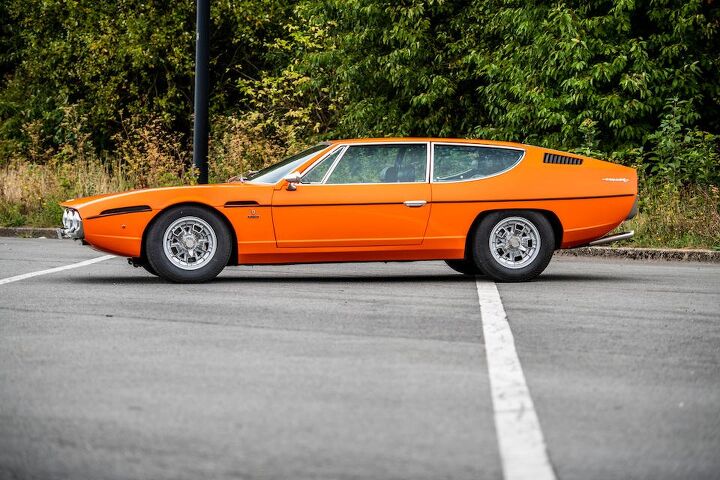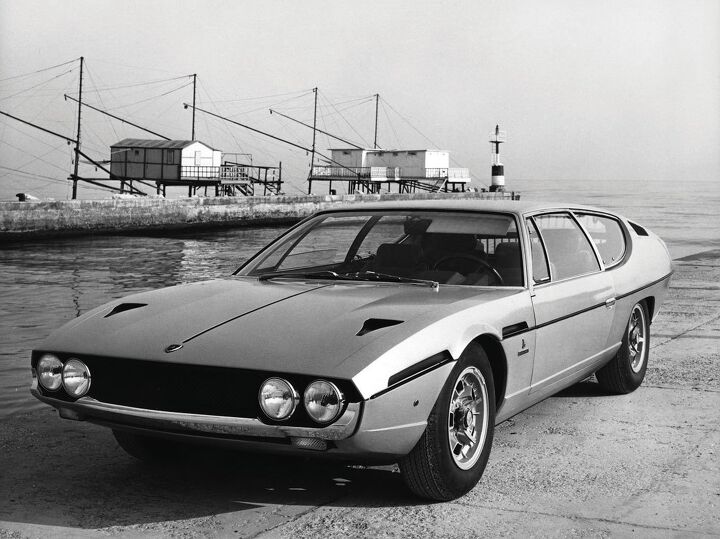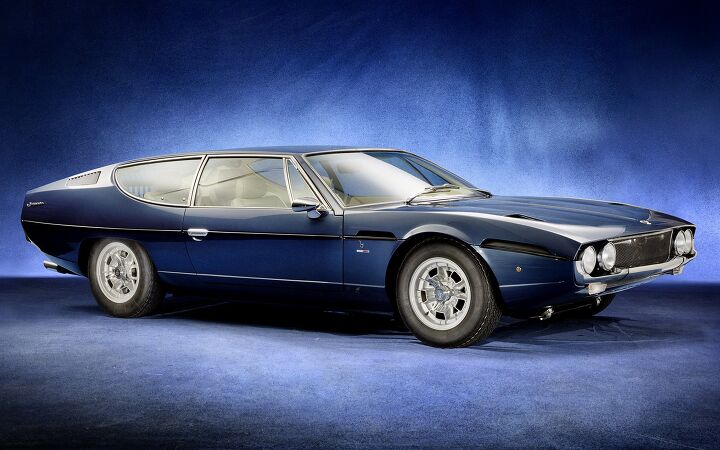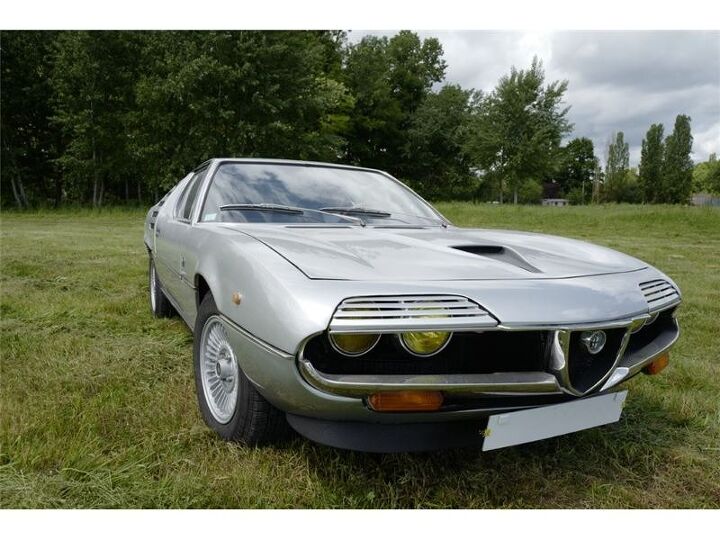#LamborghiniEspada
Rare Rides Icons: Lamborghini's Front-Engine Grand Touring Coupes (Part XII)
Ferruccio Lamborghini finally realized his dream of a proper four-seat grand touring coupe with the introduction of the Espada in 1968. The Espada entered production after a long and difficult styling process, which occurred simultaneously with a long and difficult engineering process. After multiple restyling attempts (and the use of a canned Jaguar coupe design), the Espada was produced in its Series I format from March 1968 to November 1969.
Rare Rides Icons: Lamborghini's Front-Engine Grand Touring Coupes (Part XI)
It was a long, uphill battle to get the Espada into production. Seemingly no designer would deliver on Ferruccio Lamborghini’s desire for a four-seat grand touring coupe. While style was fine, outlandish design was unacceptable. Yet designers disappointed him on the Islero (which was supposed to be a real four-seater) and fought him on what became the Espada.
Marcelo Gandini at Bertone was forced to redesign the Espada more than once to comply with Lamborghini’s wishes, even though its Jaguar Pirana looks stayed intact. Gullwing doors were a favorite feature of Gandini’s, but Ferruccio declared they were ridiculous and impractical for such a car. And while the styling was being settled, there was quite a bit of new engineering taking place for the Espada, too.
Rare Rides Icons: Lamborghini's Front-Engine Grand Touring Coupes (Part X)
In 1968, Lamborghini launched two new front-engine grand touring coupes at the same time. It was only the second time the company introduced two new models in the same model year. The two cars in question were the restrained and conservative Islero 2+2, and the larger more in-your-face Espada. While we covered Islero’s rapid demise previously in this series, the four-seat Espada had a much more successful life.
It was the realization of a large four-seat coupe from company founder Ferruccio Lamborghini, who’d wished for a car of said type since the company’s inception. The short-lived Islero turned into a last-of-moment for Lamborghini, as its sales flop proved the company with the raging bull logo was better served by more exciting, outlandish designs.
We covered Espada's styling in our previous entry. Penned by Marcelo Gandini at Bertone, the Espada was nearly a Xerox copy of the Jaguar Pirana concept, at 125 percent magnification. But its large size and generous interior space for four caused some new challenges for Lamborghini’s engineers; the road to the production Espada was not a smooth one.
Rare Rides Icons: Lamborghini's Front-Engine Grand Touring Coupes (Part IX)
We return to our timeline of front-engine Lamborghini GT coupes, but take a step back in time. Our last entry left us at the conclusion of 1969 when the slow-selling Islero ground to a halt. Dealers had a difficult time shifting all 225 examples of the Islero, comprising 125 regular Isleros and 100 of the upgraded Islero S.
Ferruccio Lamborghini dictated the Islero’s restrained and elegant design to Mario Marazzi, after several concepts to replace the aged 400GT did not meet with the boss’s approval. What Lamborghini was really after was a four-seat grand tourer in the finest tradition of grace and pace. The Islero fit most of those qualifications, but was a 2+2 and (as mentioned) almost impossible to sell. Luckily, there was another front-engine Lamborghini GT that debuted at almost the same time as Islero in 1968. Say hello to Espada.
Rare Rides: There's a 1973 Alfa Romeo Montreal in - Where Else - Quebec
In our last Rare Rides entry we had a look at the oddball little BMW Freeclimber, a Daihatsu Rugger as edited by Italian design firm Bertone. Small SUVs has never been Bertone’s forte, however. No, the most well-known Bertone designs fall into the sports coupe category.
And here’s a prime example — the Alfa Romeo Montreal.




















Recent Comments